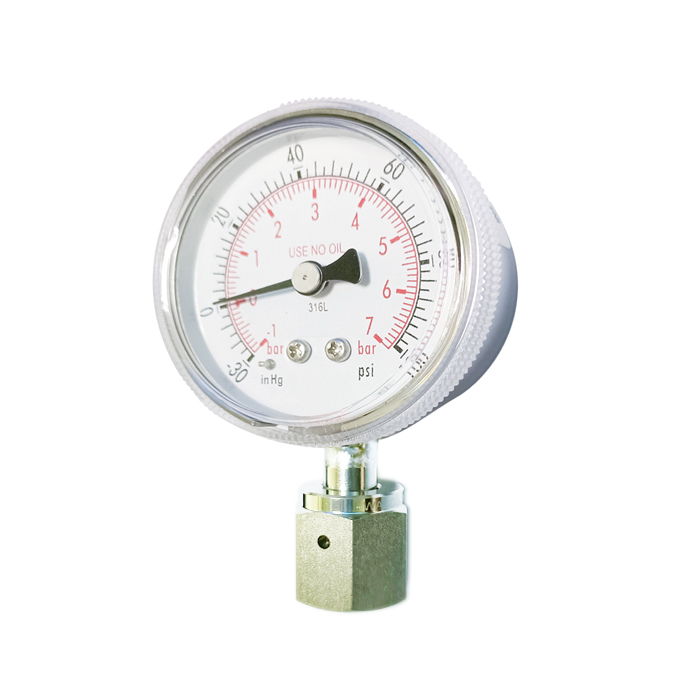
Nov . 07, 2024 14:07 Back to list
Common Types of Differential Pressure Gauges and Their Applications in Various Industries
Famous Types of Differential Pressure Gauges
Differential pressure gauges are essential instruments utilized in various industrial applications to measure the difference in pressure between two points. These gauges are vital for monitoring processes in industries such as oil and gas, water treatment, pharmaceuticals, and HVAC systems, among others. Understanding the different types of differential pressure gauges can help in selecting the right instrument for specific applications, ensuring accuracy, reliability, and efficiency.
1. Bourdon Tube Differential Pressure Gauges
One of the most common types of differential pressure gauges is the Bourdon tube gauge. This device utilizes a curved tube that straightens as pressure increases. The movement of the tube is translated into a mechanical displacement, which indicates the differential pressure on the gauge dial. Bourdon tube gauges are prized for their simplicity, durability, and wide range of measurement capabilities. They are suitable for applications involving clean, non-corrosive gases and liquids and can withstand high pressures, making them ideal for various industrial settings.
2. Diaphragm Differential Pressure Gauges
Diaphragm differential pressure gauges use a flexible membrane to measure pressure differences. When pressure is applied, the diaphragm deflects, and this movement is converted into a reading via a mechanical or electronic system. These gauges are particularly advantageous for measuring low pressures and in applications where the fluid is corrosive or contains particulates. The diaphragm can be made from various materials, allowing for customization based on the specific environmental conditions and chemical compatibility needed in different processes.
3. Capillary Differential Pressure Gauges
famous types of differential pressure gauges

Capillary differential pressure gauges are designed for applications where the pressure measuring points are located far apart. These gauges utilize a capillary tube system that connects the pressure points to the gauge, allowing for accurate pressure measurements over long distances. They are particularly useful in scenarios where physical access to the pressure source is limited or hazardous. The design ensures that the pressure is accurately transmitted without significant loss or distortion, making them ideal for process control in large facilities.
4. Electronic Differential Pressure Gauges
In recent years, electronic differential pressure gauges have gained popularity due to their advanced technology and precision. These devices employ electronic sensors to measure pressure differences and provide digital displays of the readings. Electronic gauges can offer features such as data logging, remote monitoring, and connectivity with control systems, which enhance their functionality in modern automated processes. They are also customizable and can be configured to alarm when pressure exceeds or falls below specific thresholds.
5. Manometer Differential Pressure Gauges
Manometer differential pressure gauges are fluid-filled devices that utilize the principle of hydrostatic pressure. They measure pressure differences based on the height difference of a liquid column in a U-tube or similar configuration. This type of gauge is advantageous due to its low cost, simplicity, and ability to measure very low pressures with high accuracy. However, they can be more susceptible to vibration and changes in temperature, requiring careful installation and usage in dynamic environments.
Conclusion
Differential pressure gauges play a pivotal role in numerous industries, aiding in process control, safety monitoring, and system efficiency. Each type of differential pressure gauge has its unique advantages and is suited for different applications. By understanding the differences between Bourdon tube, diaphragm, capillary, electronic, and manometer gauges, engineers and technicians can make informed decisions about which gauge to implement in their systems, ultimately enhancing operational performance and reliability.
-
High-Precision Mass Diaphragm Pressure Gauge - Reliable & Durable Solutions
NewsJun.10,2025
-
Explain Diaphragm Pressure Gauge Expert Guide, Top Manufacturers & Quotes
NewsJun.10,2025
-
Affordable Differential Pressure Gauge Prices in China Top Manufacturers
NewsJun.10,2025
-
Reliable Water Fire Extinguisher Pressure Gauges for Safety
NewsJun.10,2025
-
Durable Diaphragm Protection Pressure Gauges Get Quote
NewsJun.09,2025
-
WIKA Differential Pressure Gauge with Switch Reliable Monitoring & Control
NewsJun.09,2025
